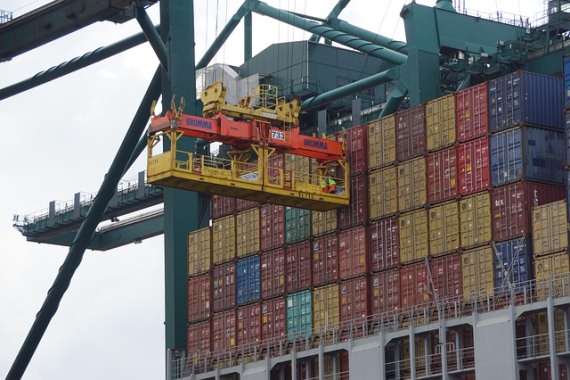-
According to the ClarkSea Index, global shipping freight rates reached a 12-year high of US$42,114/day so far in October
-
The Clarksons Containership Port Congestion Index reached a new high of 37.3% of container ship fleet capacity at port on October 21 compared to a pre-Covid-19 average of 31.4%
-
Key congestion hotspots include China, where container ship capacity at port totaled 2.6 million TEUs on October 21, up more than 50% on the 2016-19 average
-
On the West Coast of the US, container ship capacity at port totaled 0.87 million TEUs on October 21, almost three times the 2016-19 average
With disruption to global logistics and supply chains remaining widespread, port congestion has now reached new highs, according to the latest Clarksons Port Congestion Index.
Steve Gordon, managing director of Clarksons Research, said disruption to global logistics and supply chains remains widespread, with port congestion a major contributor to the record freight rates in a number of shipping segments. According to the ClarkSea Index, a cross shipping segment charter index for global shipping, freight rates reached a twelve-year high of US$42,114/day so far in October.
Congestion trends at container ship ports are most acute, with the Clarksons Containership Port Congestion Index reaching a new high of 37.3% of container ship fleet capacity on October 21 compared to a pre-Covid-19 (2016-19) average of 31.4%, Gordon said.
The Clarksons Containership Port Congestion Index represents the level of fleet capacity globally at port or at an associated anchorage each day, said Clarksons Research, a leading market intelligence and research provider to the global shipping and trade.
This means an additional 5.9% of the fleet is “tied up” as a result of bottlenecks, “part of the ‘perfect storm’ driving extraordinary container shipping markets and showing no sign of winding down as yet,” it explained.
Key congestion hotspots across the container network include China, where container ship capacity at port totaled 2.6 million TEUs on October 21, up more than 50% on the 2016-19 average of 1.7 million TEUs, and the West Coast of the US, where capacity at port totaled 0.87 million TEUs on October 21, almost three times the 2016-19 average of 0.32 million TEUs.
In the UK, the level of container ship capacity at port reached 0.22 million TEUs on October 17, up 50% on the average in the year to date, though this has since eased back to 0.15 million TEUs on October 21.
Clarksons Research director Trevor Crowe said seaborne supply chain bottlenecks have had a major impact on the world economy for more than a year now. Meanwhile, port congestion has had a major impact on capacity availability and shipping market conditions in a number of sectors, with the impact on container shipping making the most headlines. Broadly, there is little sign yet of a material easing of the disruption, he said.
Image by Hessel Visser from Pixabay





